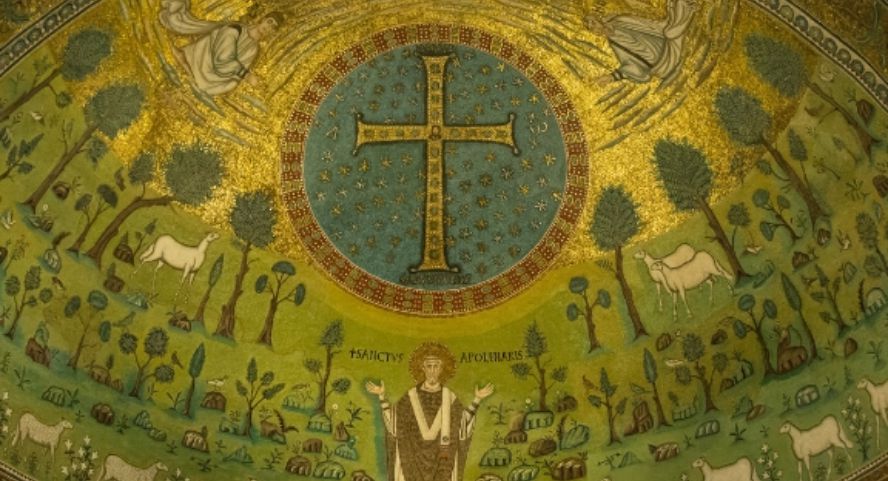"Sleep of the soul" in the writings of Aphrahat
Andrzej Uciecha
Uniwersytet Śląski w Katowicach , PolandAbstract
The soul in the ascetic teaching of Aphrahat was understood as being the element which gave life to the body. Properly nurtured it guaranteed the ascetic a moral development. This role of the soul as the foundation of life influenced his outlook on morality and sensuality. The answer to the biblical „living soul” was in his Demonstrations. This implied a spiritual energy, which every person is born with, which is eternal and adorned with a sensitivity of thought. Death embraced both the body and the soul, except that, for the „living soul”, it was equated with sleep. Analysing the anthropological terminology exposed a strong influence of biblical concepts. The Semitic character of this Persian’s anthropology created problems in the precise indication of the semantic bounds of these ideas. The search was not limited only to seeking out the exclusive character of individual human attributes, but also to try to discover their association and interdependence. From the anthropological material of ascetic teaching in the Demonstrations emerges a vision of a man integrated, in whom the corporal is subjected to the spirit and the external signs (speech and conduct) are in harmony with the internal (thought and feelings).
Keywords:
Aphrahat, the Persian Sage, judeo-Christian anthropology, early Syrian asceticism, sleep of the soulReferences
Aphraates, Demonstratio VIII. De resurrectione mortuorum, PSyr 1, 361-405, tłum. A. Uciecha: Afrahat, O ożywieniu umarłych (Demonstratio VIII. De resurrectione mortuorum, PSyr 1, 361-405), Vox Patrum 61 (2014) 503-516 (Crossref)
Bolgiani F., Encratisme, NDPAC I 809
Darragh J.T., The Resurrection of the Flesh, London 1921
Constas N., „To Sleep, Perchance to Dream”: The Middle State of Souls in Patristic and Byzantine Literature, DOP 55 (2002) 91-124 (Crossref)
Gavin F., The Sleep of the Soul in the Early Syriac Church, „Journal of the Americal Oriental Society” 40 (1920) 103-120 (Crossref)
Gignoux P., Les doctrines eschatologiques de Narsai, OrSyr 11 (1966) 321-352
Gousmett Ch.J., Shall the body strive and not be crowned? Unitary and instrumentalist anthropological models as keys to interpreting the structure of Patristic eschatology, Dunedin 1993
Khouri-Sarkis G., Le sommeil des âmes dans l’oeuvre de Narsaï, OrSyr 4 (1959) 193-196
Krüger P., Le sommeil des âmes dans l’oeuvre de Narsaï, OrSyr 4 (1959) 193-210
Mar Isaacus Ninivita, De perfectione religiosa, ed. P. Bedjan, Parisiis – Lipsiae 1909
Martikainen J., Die Lehre vom Seelenschlaf in der syrischen Theologie von Afrahat dem persischen Weisen bis zu dem Patriarchen Timotheos I, w: Theologia et cultura: Studia in honorem Gotthard Nygren, ed. F. Cleve – H.-O. Kvist, Meddelanden från Stiftelsens för Åbo akademi forskningsinsti¬tut 112, Åbo 1986, 121-129
Parisot J., Âme chez les Syriens, DThC I 1017-1018
Parisot J., Aphraatis Sapientis Persae Demonstrationes, PSyr 1, Paris 1894; PSyr 2, Paris 1907
Parisot J., Praefatio (Aphraatis doctrina), w: Aphraatis Sapientis Persae, Demonstrationes, PSyr 1, Paris 1894
Pierre M.-J., Introduction, w: Aphraate le Sage Persan, Les Exposés, t. 1: Exposés I-X, tra-duction du syriaque, introduction et notes par M.-J. Pierre, SCh 349, Paris 1988, 191-199
Pierre M.-J., L’âme ensommeillée et les avatars du corps selon le Sage Persan. Essay sur l’anthropologie d’Aphraate, POC 32 (1982) nr 3-4, 233-262
Rolt C.E., The Spiritual Body, London 1920
Rosłon W., Zbawienie człowieka w Starym Testamencie, Warszawa 1970
Rush A.C., Death and Burial in Christian Antiquity, Washington 1941
Tatianus Assyrius, Oratio ad Graecos, PG 6, 833-836, tłum. L. Misiarczyk: Tacjan, Mowa do Greków, w: Pierwsi apologeci greccy, BOK 24, Kraków 2004
Terzoli R., Âme et esprit chez Aphraate, ParOr 3 (1972)
Thesaurus Syriacus, ed. R. Payne Smith, t. 2, Oxonii 1901
Uciecha A., Ascetyczna nauka w „Mowach” Afrahata, Studia i Materiały Wydziału Teologicznego Uniwersytetu Śląskiego w Katowicach 3, Katowice 2002
Williams N.P., The First Easter Morning. A Suggested Harmony of The Gospel Narratives, London 1920
Uniwersytet Śląski w Katowicach
License
Papers published in Vox Patrum are covered by the Attribution-NoDerivatives 4.0 International (CC BY-ND 4.0) licence. Authors and users can use published works licensed under the CC-BY-ND since 2018. For earlier publications, copyrights are available under fair use rights in accordance with the Act of February 4, 1994 on copyrights and related rights.







